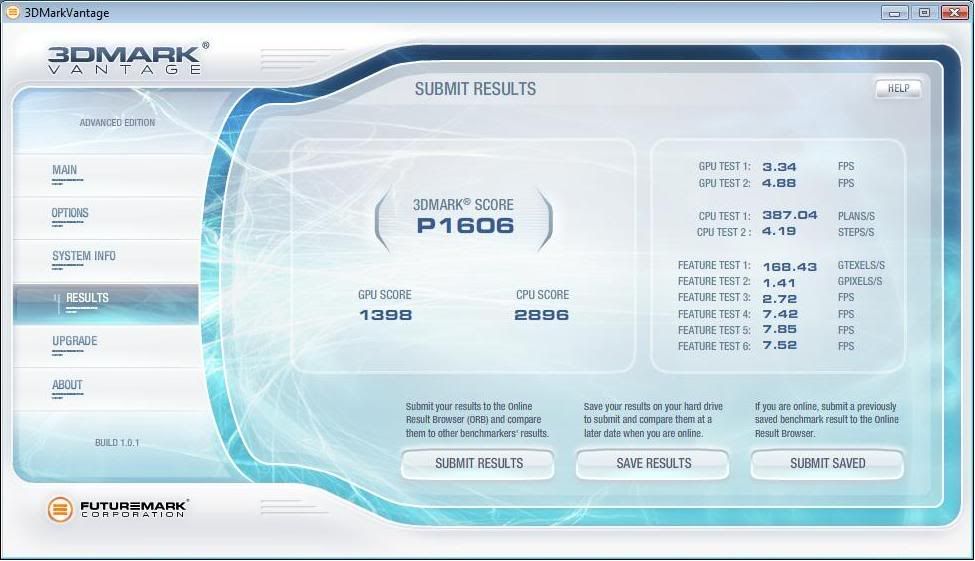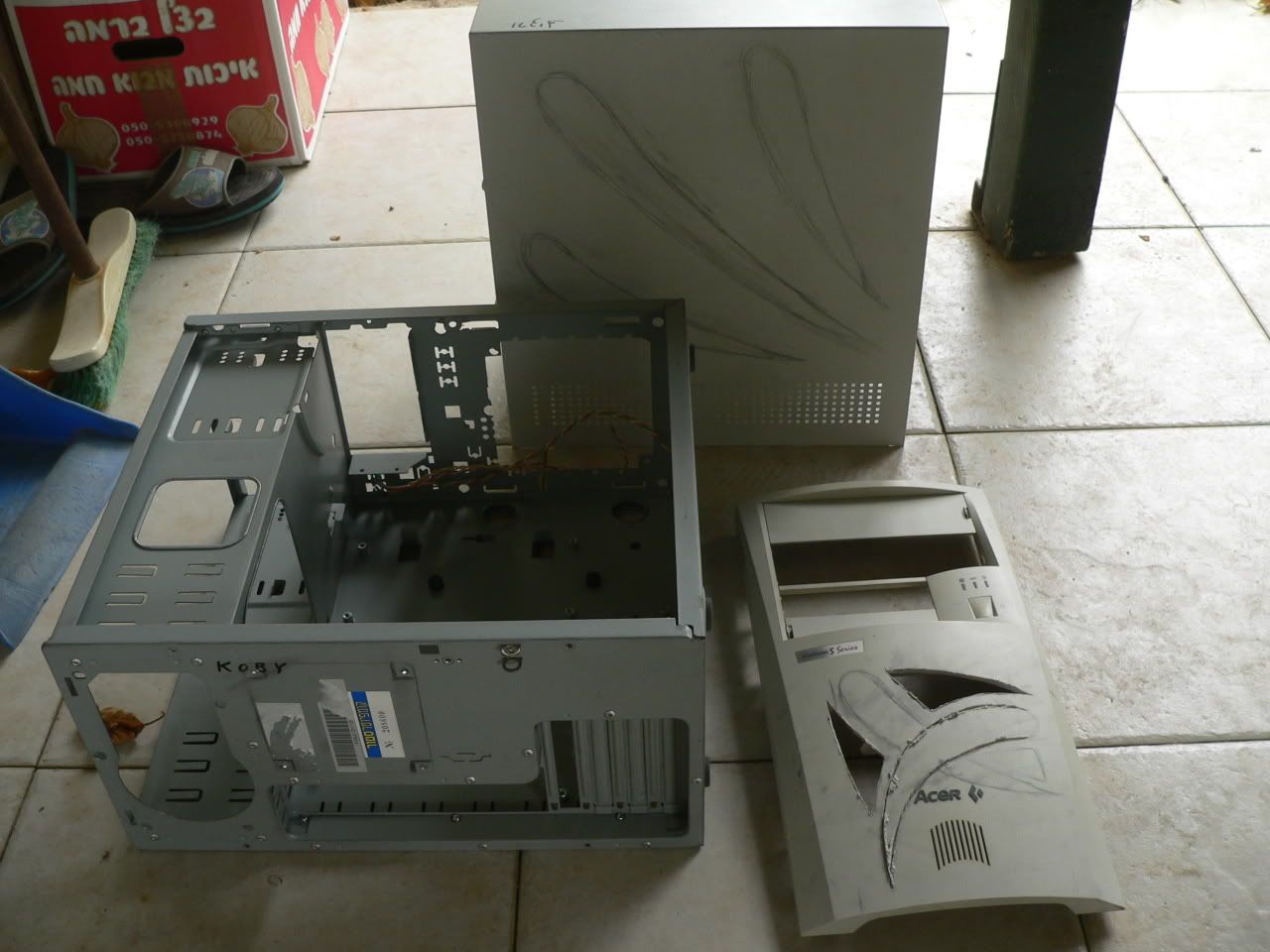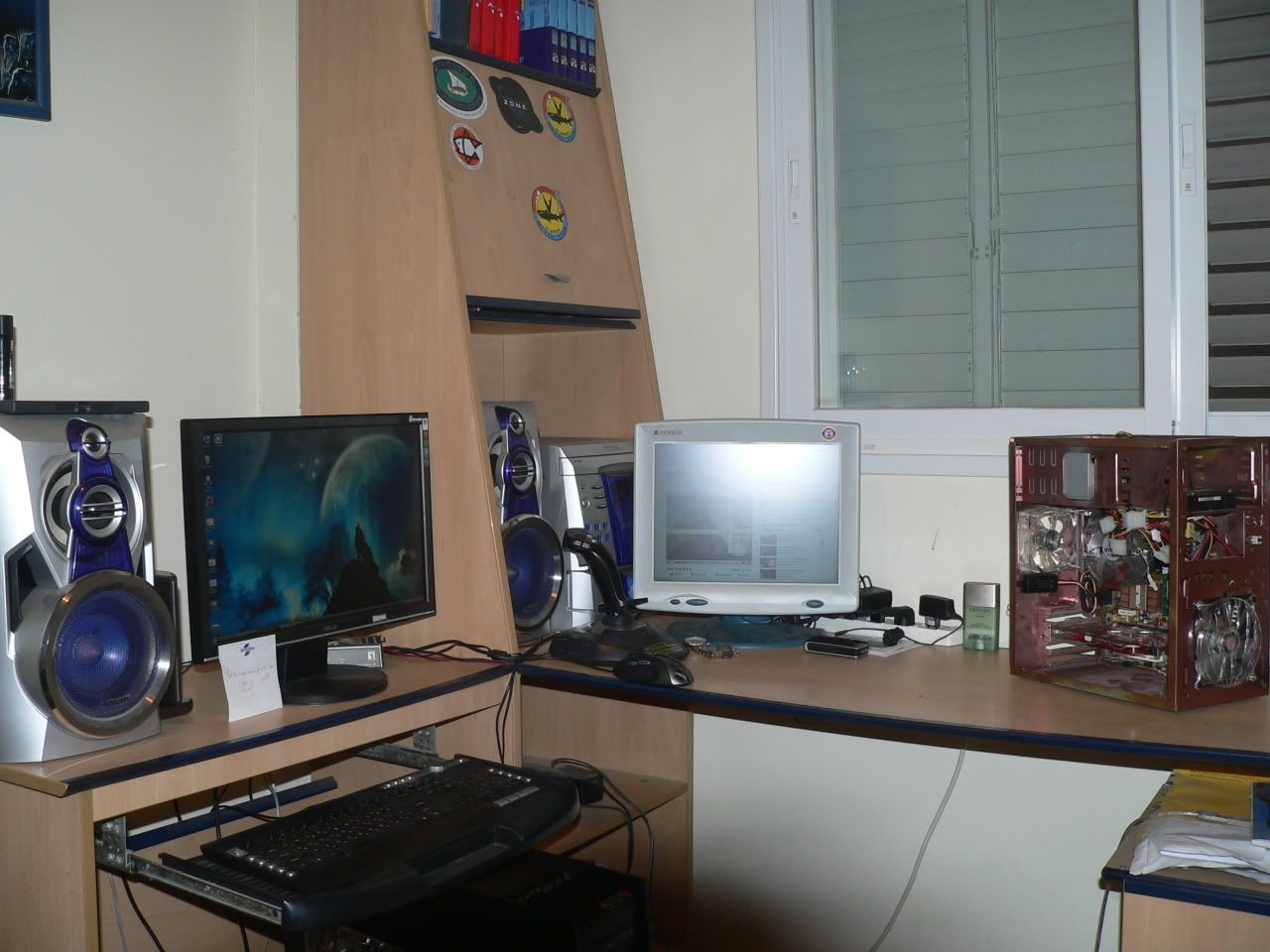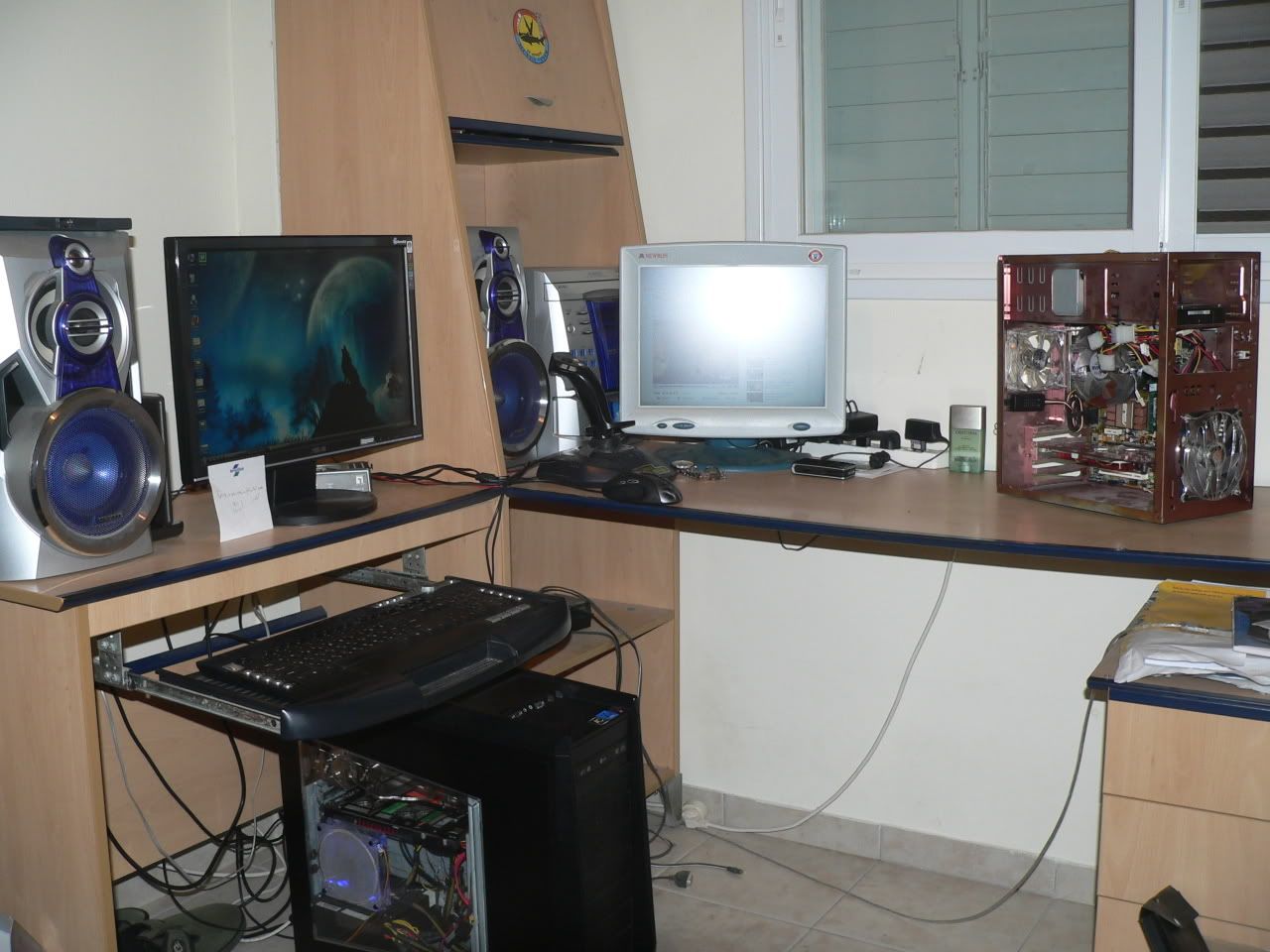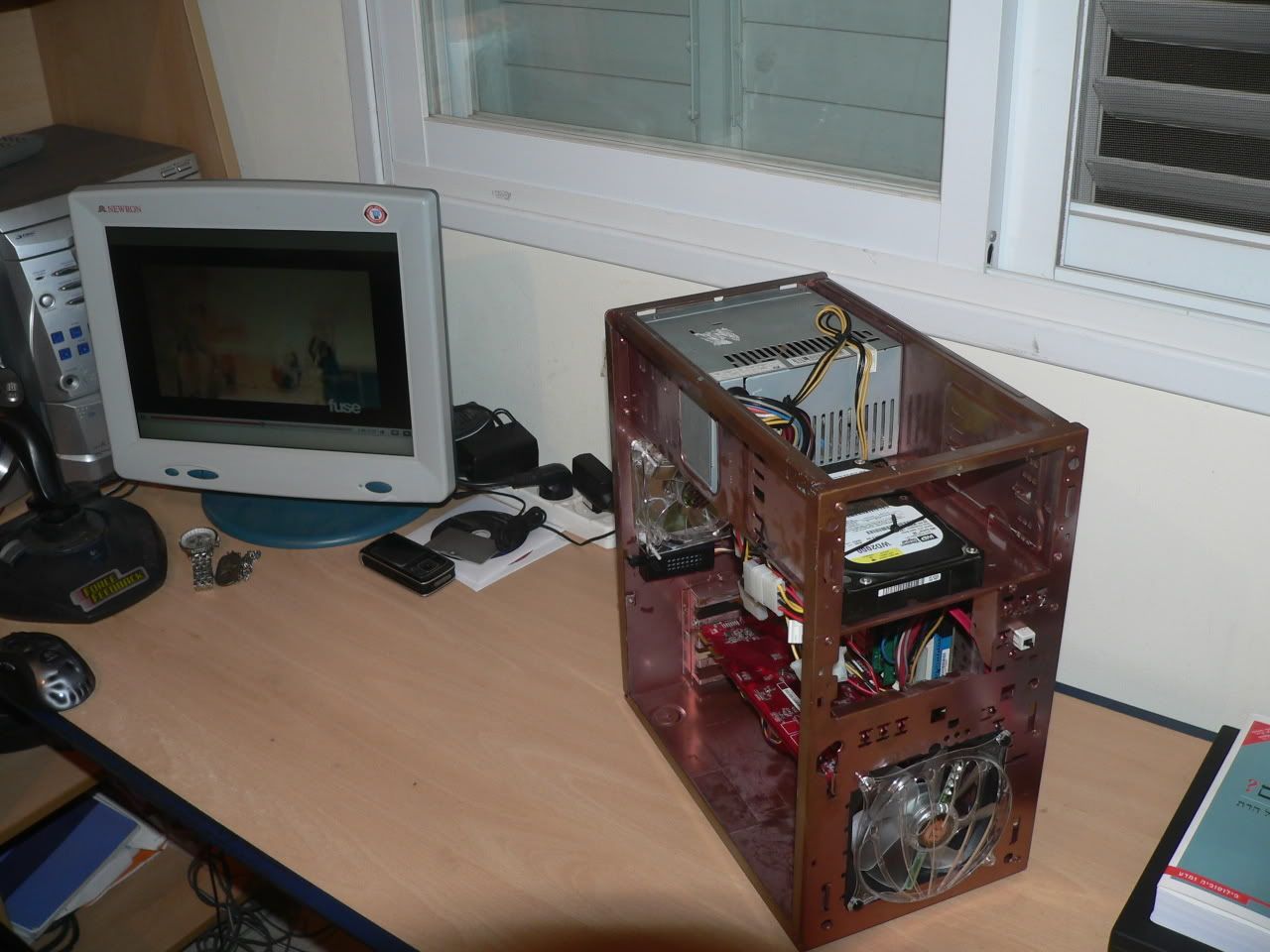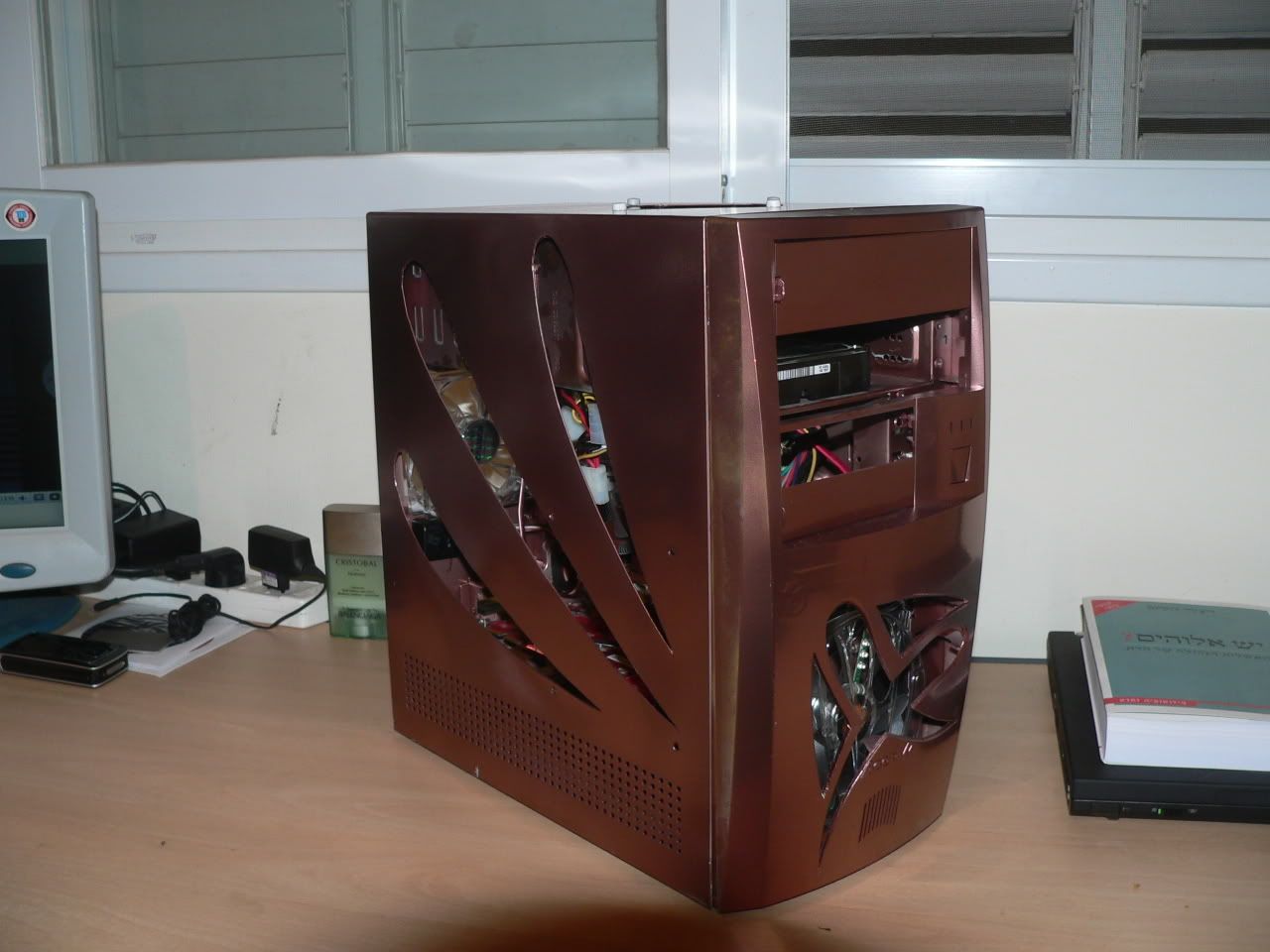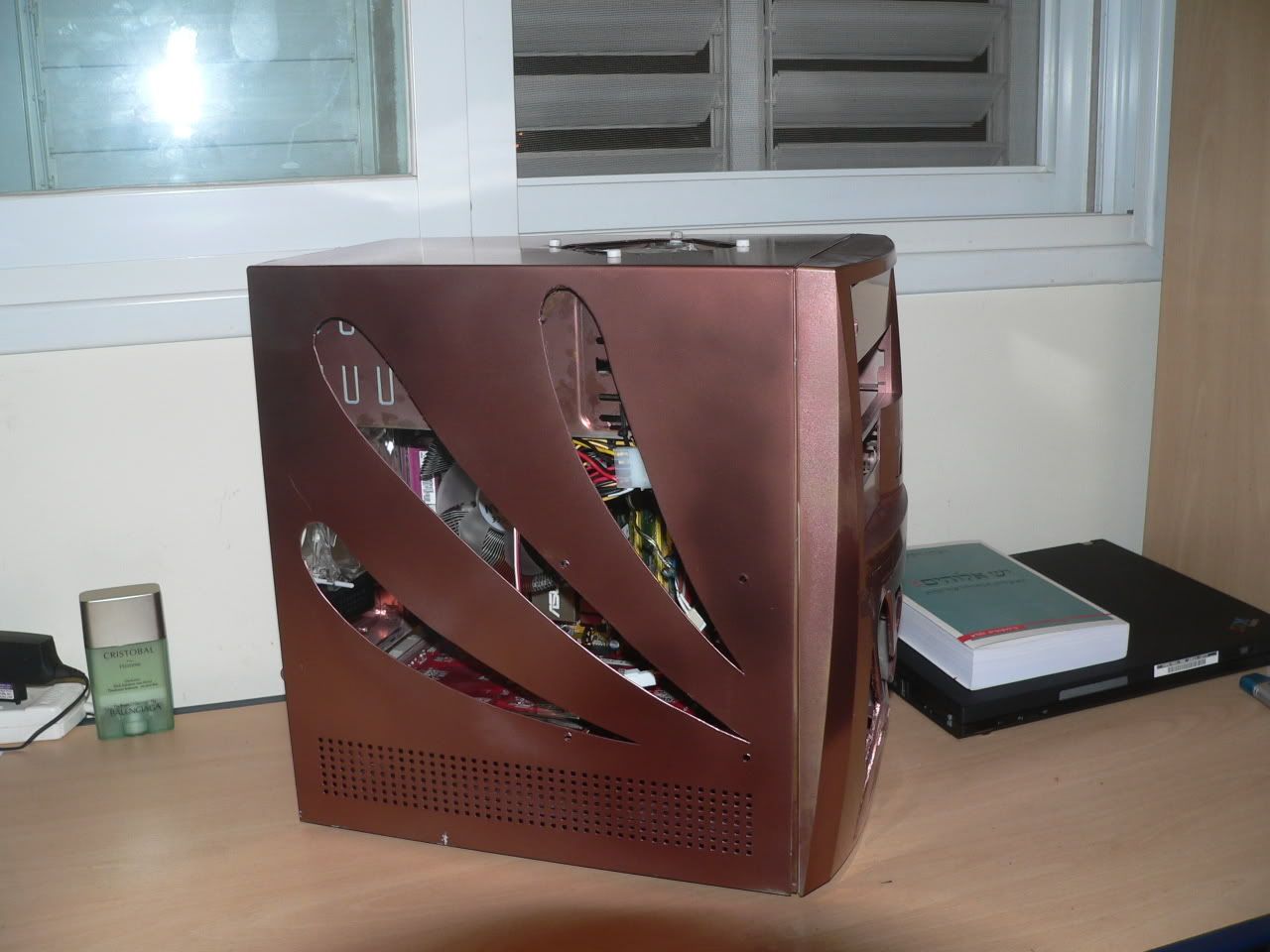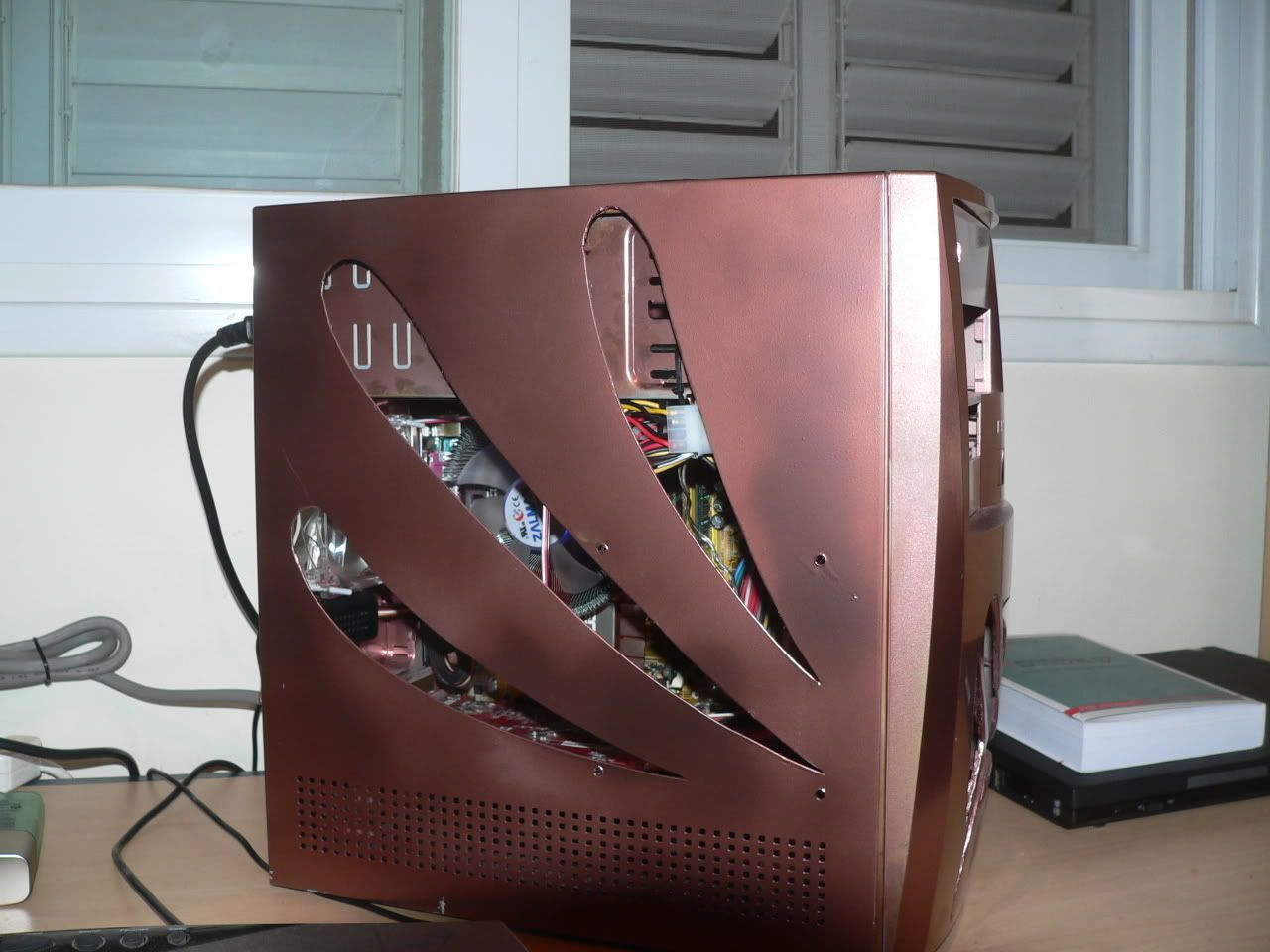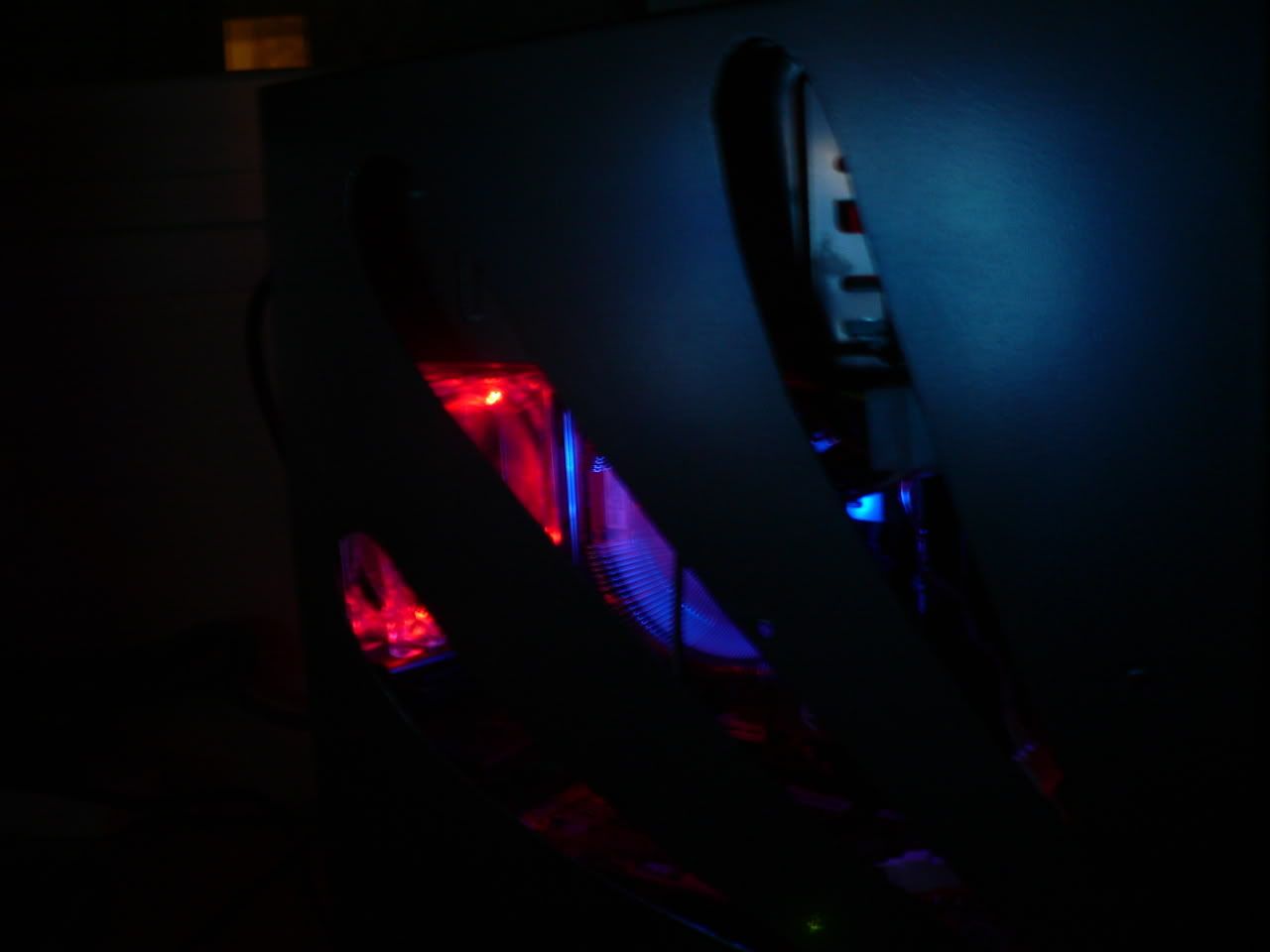With that confession behind me, we can move onto the subject at hand: It is a common misconception that to count as a "gamer" you need to have the latest and greatest in computer hardware, or not lag too far behind. Despite the inner "gamer" in me quite agreeing with it, the truth is this is not quite correct. To demonstrate why, and show you how you can game respectfully on a cheap computer, I decided to benchmark the bargain bin computer system which is highlighted (from the mod standpoint) in my previous post.
Now, for those of you too lazy to scroll down, here are the specs for that system:
CPU: Intel Celeron Dual Core E1200
Motherboard: Asus P5KPL-CM
Memory: 2GB DDR2 667Mhz
GPU: Powercolor HD2600XT 256MB GDDR4
HDD: Western Digital 200GB
CPU Cooler: Zalman CNPS7500-Alcu
Case Fans: 2 x Zalman ZM-2F Red 92mm (Rear and top exhausts), 1 x Thermaltake Cyclo Red pattern 120mm (Front intake)
PSU: HEC 300W
OS: Windows Vista Business (x64)
If we omit the custom CPU cooler (Completely not needed, I used it since I had one lying around and it omits a nice blue light), the extra fans (Also not required and used as part of the mod) and use a 160GB HDD, then a system like this (With a cheap case and 430W PSU) costs a grand total of 245$ when built from newegg.com. For my home (Israeli) readers, a system like this would cost around 350$ (Damn thieves). Throwing in a DVD-RW drive would cost us around 20$ more (I used a Plextor USB DVD-RW drive for game installation here). If we remember that the HD2600XT is two generations old, and newer cards around the same price point provide superior performance nowdays, then the expected performance rises slightly above the one presented in this review.
I managed to slightly overclock this system (The board lacks any voltage controls, so CPU OC is limited to only changing the FSB. This is simple, and nearly everyone can manage to do this. To keep things simple, I let Catalyst Control Center find the maximum OC for the video card). The CPU sits at 1800Mhz, while the clocks on the HD2600XT have been set to 857Mhz for the core and 1161Mhz for the memory (CPU stock is 1600Mhz, stock core on the HD2600XT is 800Mhz and the stock memory is 1100Mhz). The benchmarks were run on the overclocked system.
With the monetary considerations aside, we move onto the benchmarks. The system above was benchmarked in the three following titles at a resolution of 1024X768:
1) Call of Duty 4 - One of the most popular games to date, both in single player and (especially) multiplayer.
2) Crysis - One of the most (Sharing the title with Crysis Warhead and S.T.A.L.K.E.R: Clear Sky) hardware intensive games out there. It was interesting to see how a weak system handles this title.
3) Mass Effect - One of the best CRPG titles of all time (Arguably the best CRPG of all time, and game of the year 2008).
Here are the results:
1) Call of Duty 4, Settings: Everything maxed out, including textures on "extra" and AS at the maximum. Anti-Aliasing 2X enabled. The benchmark run was the "Crew Expendable" (Cargo Ship) mission.
Minimum FPS: 19
Average FPS: 38
Maximum FPS: 64
2) Crysis, Settings: Everything set to medium, no post-processing enabled. The benchmark run was the early game, from the aircraft flight scene at the beginning until the "First Light" checkpoint above the beach.
Minimum FPS: 10
Average FPS: 30
Maximum FPS: 43
3) Mass Effect, Settings: All game settings maxed out.
Minimum FPS: 10
Average FPS: 44
Maximum FPS: 62
As we can see, this computer can provide us with an enjoyable gaming experience. True, this is not a mind-blowing resolution or Crysis on Very High settings, but if you can only spend 300$ on a computer, you can still enjoy today's games on reasonable settings. So if you were told that you could not game on less than a 1000$ computer and decided to give up on a computer for gaming, you may wish to reconsider this decision.
Addendum:
I dragged over an old 19" CRT so I could run 3DMark Vantage on this system (The previous 15" LCD monitor did not support a resolution of 1280x1024 which is required by 3DMark Vantage to run). Here is the rather pitiful result:
